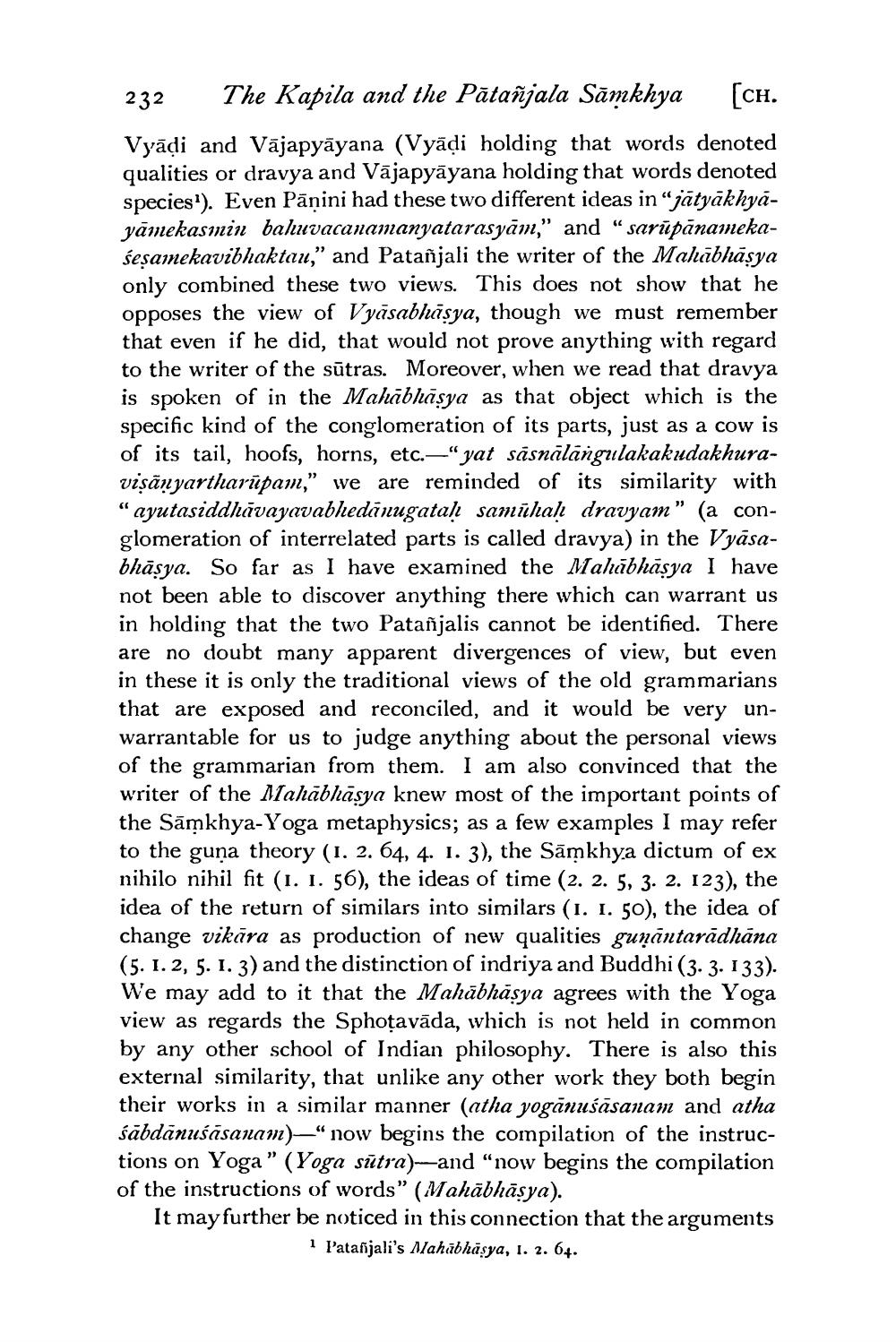________________
232 The Kapila and the Pātañjala Sāmkhya [CH. Vyādi and Vājapyāyana (Vyādi holding that words denoted qualities or dravya and Vājapyāyana holding that words denoted species'). Even Pāņini had these two different ideas in“ jätyākhyāyāmekasmin baluvacanamanyatarasyām," and "sarūpānamekasesamekavibhaktau," and Patañjali the writer of the Mahābhāsya only combined these two views. This does not show that he opposes the view of Vyāsabhāsya, though we must remember that even if he did, that would not prove anything with regard to the writer of the sūtras. Moreover, when we read that dravya is spoken of in the Mahābhāsya as that object which is the specific kind of the conglomeration of its parts, just as a cow is of its tail, hoofs, horns, etc.—" yat sāsnālāngulakakudakhuravisānyartharūpam,” we are reminded of its similarity with "ayutasiddhāvayavabhedānugataḥ samāhah dravyam" (a conglomeration of interrelated parts is called dravya) in the Vyāsabhāsya. So far as I have examined the Mahābhāsya I have not been able to discover anything there which can warrant us in holding that the two Patañjalis cannot be identified. There are no doubt many apparent divergences of view, but even in these it is only the traditional views of the old grammarians that are exposed and reconciled, and it would be very unwarrantable for us to judge anything about the personal views of the grammarian from them. I am also convinced that the writer of the Nsahābhāsya knew most of the important points of the Sāmkhya-Yoga metaphysics; as a few examples I may refer to the guna theory (1. 2. 64, 4. 1. 3), the Sāmkhya dictum of ex nihilo nihil fit (1. I. 56), the ideas of time (2. 2. 5, 3. 2. 123), the idea of the return of similars into similars (1. I. 50), the idea of change vikāra as production of new qualities guņāntarādhāna (5. 1.2, 5.1.3) and the distinction of indriya and Buddhi (3. 3. 133). We may add to it that the Mahābhāsya agrees with the Yoga view as regards the Sphotavāda, which is not held in common by any other school of Indian philosophy. There is also this external similarity, that unlike any other work they both begin their works in a similar manner (atha yogānuśāsanam and atha śābdānuśāsanam)—"now begins the compilation of the instructions on Yoga” (Yoga sūtra)--and “now begins the compilation of the instructions of words” (Mahābhāsya). It may further be noticed in this connection that the arguments
i Patanjali's Mahābhāsya, I. 2. 64.




